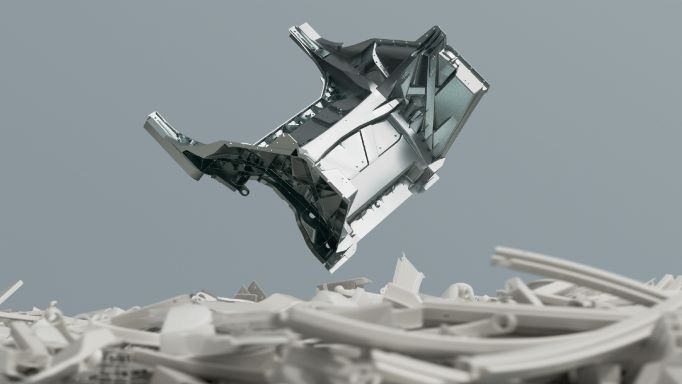Volvo Cars Investing in Aluminum MegacastingVolvo Cars Investing in Aluminum Megacasting
Reducing the number of castings of aluminum in the vehicle’s structure, such as major elements of the floor structure of the car cast as one single part, significantly reduces weight, improving efficiency and potential range of battery-electric vehicles.

Volvo Cars is turning to aluminum megacasting in a bid to accelerate the range and performance of its future battery-electric vehicles.
The Swedish automaker has pledged to invest SEK10 billion ($1.1 billion) into its Torslanda manufacturing plant in Sweden over the next few years for the production of that next generation of fully electric cars.
While the investment includes a battery production center and improvements in other manufacturing processes, such as the paint shop, it hopes the game-changer will be the use of aluminum megacasting for body parts. This process claims a number of benefits, including lightweighting, while boosting the automaker’s ability to meet sustainability targets.
Reducing the number of castings of aluminum in the vehicle’s structure, such as major elements of the floor structure of the car cast as one single part, significantly reduces weight, improving vehicle efficiency and potential range.
In turn, the process reduces complexity in the manufacturing process and creates cost savings in terms of material use and logistics, reducing the overall environmental footprint across the manufacturing and supply chain networks.
However, Volvo points out the planned introduction of megacasting of aluminum body parts is subject to environmental permits from the regional land and environmental court.
The upgrade of the paint shop involves the installation of new machinery and implementing new processes, which are expected to support the ongoing reduction of paint shop energy consumption and emissions.
A new battery assembly plant will integrate battery cells and modules in the floor structure of the car, while the assembly shop is being refurbished with, for example, a new “marriage point” where the top body and the floor of the car meet for the first time.
Logistics areas will also be refurbished, improving material flow and optimizing the transport of goods and parts into the plant.
The Torslanda plant has an annual production capacity of 300,000 cars and is one of Volvo Cars’ longest-operating manufacturing facilities. It was opened in April 1964 by the Swedish King, Gustaf VI Adolf, and was for a long time the largest single workplace in the country. Currently, the Torslanda plant operates on three shifts and employs about 6,500 people.
Håkan Samuelsson, chief executive of Volvo Cars, says: “With these investments, we take an important step towards our all-electric future and prepare for even more advanced and better electric Volvos. Torslanda is our largest plant and will play a crucial role in our ongoing transformation as we move towards becoming a pure-electric car maker by 2030.”
About the Author
You May Also Like

